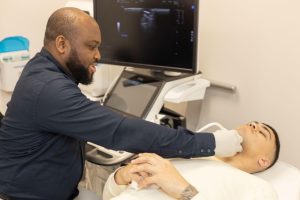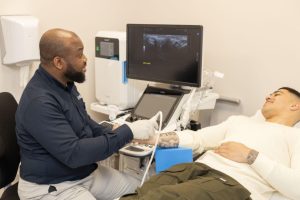If you’re pregnant, chances are you’re thinking a lot about labour. What will labour feel like? What kind of delivery will I have? How will I know when I’m in labour? It’s good to know all of the possible signs of labour you may experience so you can save yourself some stressful guesswork.
Remember, every woman is different and every labour is different. The beginning of labour may look different for you than it did for your friend. Some labours begin subtly and some begin with the stereotypical dramatic water breaking. (Only 15% of labours begin with waters breaking, contrary to what movies and television would have us believe!)
We’re going to explore some of the common signs of labour so you can spot it as early as possible!
Your bump “dropped”
“Your bump dropping” refers to the changes you see when your baby gets into the birthing position, or “engages”. You’ll notice that your bump sits lower down to your pelvis than before. You may also be finding it easier to take deep breathes as the baby is no longer at your diaphragm (below your lungs). Your bump may also feel lighter and your “waddling” may have gotten worse.
Seeing a “show”
Nothing to do with going to the theatre!
A “show” is a term given to the mucous plug which had been acting as a lid to protect the baby from the outside world. You’ll notice an increase in vaginal discharge when this loosens or dislodges. You may experience a “bloody show” which is the same thickened discharge but tinged pink or brown from blood vessels breaking in preparation for labour. If your discharge is bright red or dark red, check in with your doctor straight away.
Nesting
If you’ve been feeling strangely energetic, restless and have an insatiable urge to clean and organise, you may be nesting. An increase in nesting usually occurs weeks before labour so don’t rush around too much. Conserve energy for the big day!
Change in baby’s movements
You may have become used to your baby’s little routines. Maybe they dance around whenever you try to nap or start kicking after dinner. Towards the end of your pregnancy, you may notice that their routines have changed and their movements are less kicky and more squirmy. This is a result of their new position low in your pelvis rather than high in your abdomen. The patterns may change, but the frequency or strength should not change. If you feel like your baby is moving less, or less forcefully, contact your maternity hospital straight away. Movements do not stop towards the end of pregnancy.
Joints feeling looser
To prepare for labour, your body will produce a hormone called relaxin. This is to soften and loosen the cartilage at your pubic bone to allow your baby through. Since this hormone can’t target just one joint, it loosens all of your joints leaving you feeling a bit unstable.
Digestive disturbances
A nice term for diarrhea. As everything starts to loosen up and relax to prepare your baby’s passageway, your digestive system may also loosen up. Your body keeps your digestive system clear to help the uterus to contract effectively and maximise space for your baby to pass.
Contractions
You may think this one is obvious. However, it’s not always so clear!
In your third trimester, you may have experienced Braxton Hicks contractions which can make you second-guess whether you’re truly in labour or just having “practice contractions”.
You can tell the difference between labour contractions and Braxton Hicks by asking yourself the following questions:
Are my contractions regular? If you’re in labour, your contractions will be at regular intervals (say, every 20 minutes) and get closer together over time. Braxton Hicks contractions stay irregular.
Do my contractions change when I move? Braxton Hicks contractions will ease with a change of position, resting or moving around. Real labour contractions will continue regardless of what you do.
Are my contractions getting stronger? Braxton Hicks contractions are usually weak. However, sometimes they start strong and become gradually weaker. Real labour contractions will become steadily stronger.
Where is the pain? Braxton Hicks contractions are usually only felt on the front of your abdomen. Real labour contractions usually begin in the back and move to the front.
Wishing you all the best for your labour and delivery,
– The UltraScan Team







